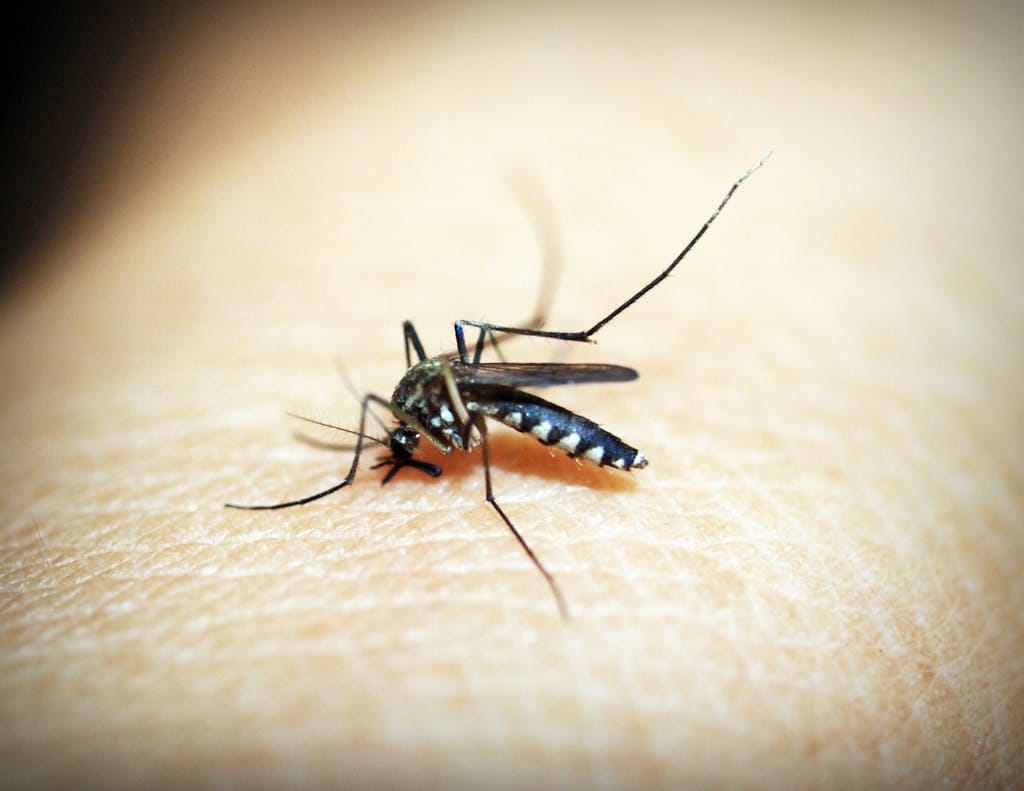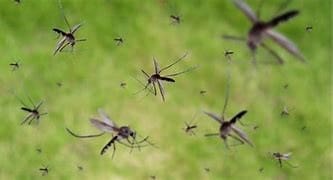Mosquitoes in Alaska: Tips for Staying Bite-Free
Jet Setting with Jen contains affiliate links and is a member of the Amazon LLC Associates Program. If you make a purchase using one of these Amazon links, we may receive compensation at no extra cost to you. Read our Privacy Policy for more information.
When I first planned my trip to Alaska, I was prepared for rugged landscapes, unpredictable weather, and breathtaking wildlife encounters. What I wasn’t quite ready for? The mosquitoes in Alaska. I had heard stories—some exaggerated, some terrifying—about swarms so thick they could drive even the most adventurous travelers indoors. But as someone who loves the great outdoors, I wasn’t about to let a few (or a few thousand) mosquitoes ruin my adventure. Through trial and error, I learned what works, what doesn’t, and how to enjoy Alaska without being eaten alive. If you’re planning your own trip, let me share everything I’ve learned so you can experience Alaska’s beauty without the itchy souvenirs.
Introduction: Mosquitoes in Alaska
Alaska’s wild beauty is unmatched—towering mountains, endless forests, and some of the most pristine wilderness in the world. But with that wilderness comes an often-overlooked challenge: mosquitoes. With over 30 species buzzing around the state, they can be a real nuisance if you’re unprepared. Whether you’re planning a summer road trip, a backcountry hiking expedition, or a cruise along the Alaskan coast, knowing when and where mosquitoes are at their worst—and how to protect yourself—can make all the difference. In this guide, I’ll break down everything you need to know about the mosquitoes in Alaska, from peak season to prevention tips, so you can fully enjoy your adventure.
Are There Mosquitoes in Alaska
Yes, and plenty of them! Alaska is home to over 30 species of mosquitoes, each playing a role in the state’s vast ecosystem. While these buzzing insects are a key part of the food chain—serving as nourishment for birds, fish, and other wildlife—they can be a major nuisance for travelers. Understanding their behavior, habitats, and peak seasons will help you better prepare for your Alaskan adventure and minimize unpleasant encounters.
Peak Mosquito Season: Late May to Mid-July
If you visit Alaska in the summer, you’re bound to encounter mosquitoes—especially during peak season, which runs from late May through mid-July. This period coincides with the thawing of Alaska’s frozen terrain, creating ideal breeding conditions with pools of standing water forming across the landscape.
Mosquito populations explode in early summer as the temperatures rise and snowmelt leads to vast wetland areas. I quickly learned that warm, humid days following heavy rains seemed to bring them out in full force. However, as August approaches and the weather cools, mosquito activity begins to decrease significantly, making late summer a much more comfortable time to explore.

Regional Hotspots for Mosquito Activity
Not all parts of Alaska are equally plagued by mosquitoes. Depending on where you travel, your experience may range from mild annoyance to full-on swarms. Based on my travels and local insights, here are some of the worst mosquito hotspots in the state:
Interior and Northern Alaska: The Mosquito Capital
Regions like Fairbanks, Denali National Park, and the Arctic tundra are some of the worst places for mosquitoes in Alaska. The combination of warm summers, slow-draining wetlands, and vast forests makes these areas prime breeding grounds. I remember hiking near the Tanana River in Fairbanks and being absolutely swarmed, especially near boggy or marshy areas. Bug nets and strong repellent were essential!
Southeast Alaska: Milder but Present
If you’re visiting Juneau, Sitka, or Ketchikan, you’ll still encounter mosquitoes, though not as aggressively as in the interior. The cooler coastal air and ocean breezes help keep them at bay, but wooded trails and areas near stagnant water still have their fair share of buzzing pests. I found that hiking near Mendenhall Glacier was fine on breezy days, but the forested trails could get mosquito-heavy in the evenings.
Southcentral Alaska: Mixed Conditions
Areas around Anchorage, the Kenai Peninsula, and Prince William Sound tend to have fewer mosquitoes than the interior, but that doesn’t mean they’re absent. When I hiked the Tony Knowles Coastal Trail in Anchorage, I noticed almost no mosquitoes near the water. However, as soon as I ventured into the more forested Chugach State Park, they were much more noticeable—though not overwhelming.
Western Alaska: Swarms in the Wilderness
Lesser-visited areas like Bethel, Nome, and the Yukon-Kuskokwim Delta are notorious for heavy mosquito populations in the summer months. The tundra’s boggy terrain and standing water make it a perfect breeding ground, and I heard stories from locals about how mosquito swarms can be so thick they resemble clouds. If you’re heading into remote parts of western Alaska, prepare accordingly!
Personal Tips for Mosquito Prevention
After multiple trips to Alaska and learning the hard way, I’ve developed a solid game plan for dealing with mosquitoes. Here’s what worked best for me:
1. Utilize Physical Barriers
Whenever possible, I chose accommodations with screened-in porches or cabins with well-sealed windows.
If camping, I brought a mosquito net to cover my tent and sleeping area—an absolute must-have in high-mosquito zones.
For extra protection, I used a head net in areas where swarms were particularly bad (it may look silly, but it’s a lifesaver).
2. Time Your Activities Wisely
Mosquitoes are most active at dawn and dusk, so I planned hikes and outdoor activities during the middle of the day when they were less aggressive.
On windier days, I found that mosquitoes were less bothersome, so I aimed for higher elevations or open, breezy areas when possible.
3. Choose the Right Locations
Cities like Anchorage and Juneau had far fewer mosquitoes than interior regions, making them more comfortable for casual exploring.
When traveling to more rural or wilderness-heavy areas, I made sure my accommodations had proper mosquito protection, like netting and bug screens.
4. Use Effective Repellents
DEET-based repellents (like OFF! Deep Woods) worked the best for me and provided long-lasting protection.
For a natural option, picaridin is another great alternative that doesn’t have the strong smell of DEET but is still highly effective.
I also treated my clothing and gear with permethrin, which helped repel mosquitoes even before applying bug spray.
5. Wear Protective Clothing
A wide-brimmed hat with a net was a lifesaver in dense forests and tundra regions.
I quickly learned that long-sleeved shirts, long pants, and socks were essential when venturing into mosquito-prone areas.
Light-colored clothing seemed to attract fewer mosquitoes than darker shades.

Understanding Mosquito Behavior
Delving deeper into mosquito behavior in Alaska helped me better prepare for my trip and avoid some of the worst mosquito encounters. Here’s what I learned:
1. Breeding Grounds: Standing Water is Their Haven
Mosquitoes lay their eggs in standing water, and with Alaska’s vast wetlands, marshes, and meltwater pools, it’s a perfect environment for them to thrive. I found that avoiding areas with stagnant ponds, boggy marshes, or even large puddles significantly reduced my exposure to swarms. Even something as small as a water-filled footprint in the tundra could be a breeding ground!
One key thing I noticed? Freshly thawed tundra and riverbanks were particularly active with mosquitoes. During peak mosquito season, areas with slow-moving water—like shallow lake edges or sloughs—became hotspots for breeding. If I needed to set up camp, I always chose dry, breezy areas rather than locations near still water.
2. Species Variation: Not All Mosquitoes Are the Same
I was surprised to learn that Alaska is home to over 30 different mosquito species, each with different behaviors and active seasons. Some species are more aggressive than others, and some even show up when you’d least expect them.
The Snow Mosquito: One of the most fascinating species I encountered was the snow mosquito. Unlike typical mosquitoes, which thrive in warm weather, snow mosquitoes emerge early—even when there’s still snow on the ground! These hardy insects can survive subfreezing temperatures and are active in spring and late fall when most other species have disappeared. If you’re planning an early-season hike in Denali or the Arctic, be aware that you might still encounter these resilient biters.
Floodwater Mosquitoes: These species lay eggs in soil that becomes flooded in the spring. Their populations explode after heavy rains and are most active in June and July.
Tundra Mosquitoes: These are the notorious swarming mosquitoes you’ll hear the most about. They thrive in Alaska’s northern and interior regions, where wet tundra provides endless breeding grounds. If you’ve ever seen photos of travelers wearing full bug nets in the Arctic, these are the culprits.
Understanding when and where different species are active helped me plan my outdoor adventures more strategically. By choosing the right time and location, I was able to avoid the worst mosquito zones and enjoy the wilderness without constantly swatting away bugs.
Embracing the Alaskan Wilderness
Yes, mosquitoes in Alaska are abundant—but they should never overshadow the breathtaking landscapes, once-in-a-lifetime adventures, and stunning wildlife that make this destination so special.
I never let mosquitoes deter me from experiencing the magic of Denali’s towering peaks, the serene fjords of Kenai, or the midnight sun glowing over the Arctic tundra. Instead, I approached my trips with knowledge and preparation, allowing me to fully immerse myself in nature without constant discomfort.
And here’s the good news: Alaskan mosquitoes aren’t known to transmit serious diseases like they do in other parts of the world. Unlike in tropical regions, where mosquitoes can carry malaria or dengue fever, Alaska’s mosquitoes are mostly just a nuisance. So while you’ll definitely want to avoid the bites, you don’t need to worry about contracting any major illnesses.
By understanding their behavior, using the right repellents and protective gear, and planning my activities strategically, I found that mosquitoes became a minor inconvenience rather than a trip-ruining disaster. With the right mindset and preparation, you can fully enjoy the Alaskan wilderness—mosquitoes and all!
Conclusion: Mosquitoes in Alaska
Would I go back to Alaska despite the mosquitoes? Absolutely. Because with the right knowledge, preparation, and attitude, mosquitoes are just a small price to pay for one of the most spectacular travel experiences on Earth.
So if you’re dreaming of visiting Alaska but feeling hesitant about the bugs, my advice is simple: Don’t let mosquitoes hold you back. Come prepared, embrace the wild, and create memories that will stay with you long after the bites fade.